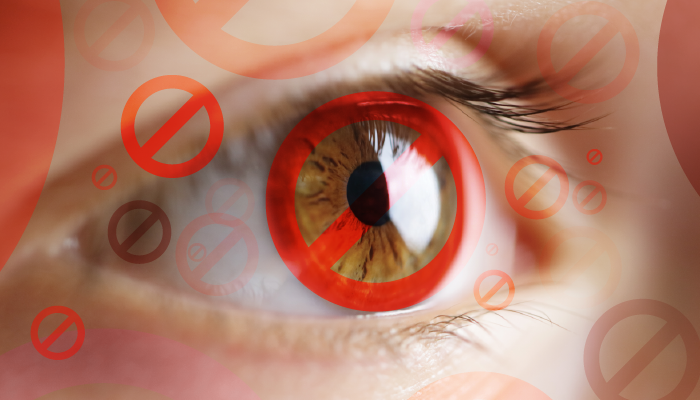
Credit: Original image Adobe Stock
Pediatric ocular trauma can lead to severe consequences, including infections, long-term vision loss, and even blindness. Infants and toddlers are at higher risk because they are naturally curious but lack the physical coordination to avoid potential hazards (1). Our study – spanning 2017 to 2021 – sought to uncover the epidemiological trends of ocular injuries caused by consumer products (CPs) in this vulnerable age group within the US. Furthermore, we aimed to gauge the impact of the COVID-19 pandemic on the nature and causality of these injuries (2).
During our research, we used data from the US Consumer Product Safety Commission’s (USCPSC) National Electronic Injury Surveillance System (NEISS), focusing on children aged three and below. The study was divided into pre-pandemic (2017–2019) and pandemic (2020–2021) periods to help identify any shifts in injury patterns. Over the five-year study period, 23,882 ocular injuries were reported, with 2,073 cases involving children under three years old. Our analysis revealed consistent trends in the number and seasonality of ocular injuries across both periods, with the highest frequency occurring during the summer months, particularly in July. This trend aligns with previous findings across all age groups, suggesting that increased outdoor activities during the summer months may contribute to a higher incidence of injuries.
Demographically, it is interesting to note that the majority of injuries involved male children – a trend that is consistent with past studies (3). However, notable changes were observed in the racial distribution of cases during the pandemic. The proportion of non-Hispanic white children with injuries decreased, while the proportion of non-Hispanic black children increased. This shift may reflect the broader socio-economic impacts of the pandemic and warrants further investigation. Understanding these demographic shifts is crucial to targeting preventive measures effectively and addressing potential disparities in injury risks.
Prior to the pandemic, contusions and abrasions were the most common types of ocular injuries. However, during the pandemic, chemical burns became more prevalent, accounting for nearly one-third of the injuries compared with one-quarter in the pre-pandemic period. Cleaning products, particularly laundry detergents and bleach, were the primary culprits, perhaps reflecting the increased use of these products for disinfection during the pandemic, a trend observed globally as households endeavored to maintain hygiene and reduce viral transmission.
The results of our study underscore the need for targeted interventions to reduce pediatric ocular injuries. From a public health perspective, several policy recommendations can be made to address these issues. First, stricter regulations on the labeling and packaging of household cleaning products are essential. Policies that mandate child-resistant packaging and clearer, more prominent warning labels can help reduce the risk of accidental exposure. Public health campaigns should also be launched to educate parents and caregivers about the dangers of household chemicals, as well as the importance of safe storage practices. Such campaigns can leverage social media, community centers, and healthcare facilities to reach a broad audience effectively.
We also believe that collaboration between manufacturers, healthcare providers, and regulatory agencies is vital to developing and enforcing safety standards for consumer products. Incentivizing manufacturers to innovate safer product designs, such as non-toxic alternatives and safer dispensing mechanisms, can also play a critical role in preventing these types of injuries. Regular safety audits and compliance checks will ensure that these standards are maintained across the industry.
Our study provides crucial insights into the epidemiological trends of pediatric ocular injuries and the impact of the COVID-19 pandemic. By identifying the changes in injury patterns and the specific risks associated with consumer products, we can implement strategies to protect the visual health of young children and reduce the incidence of these preventable injuries. The pandemic has highlighted the need for greater vigilance and proactive measures to ensure the safety and well-being of our youngest and most vulnerable population.
References
- RA Ferguson et al., “New Zealand childhood ocular trauma study: Analysis of 75 601 cases of ocular injury from 2007 to 2016,” Clin Exp Ophthalmol, 47, 718 (2019). PMID: 30801946.
- MZ Chauhan et al., “The impact of the COVID-19 pandemic on ocular trauma in American infants and toddlers,” J AAPOS, 28, 103864 (2024). 103864. Published: March 06, 2024. PMID: 38458597.
- A Kamboj et al., “Household cleaning product-related ocular exposures reported to the United States poison control centers,” Eye (Lond), 34, 1631 (2020). PMID: 31813934.
